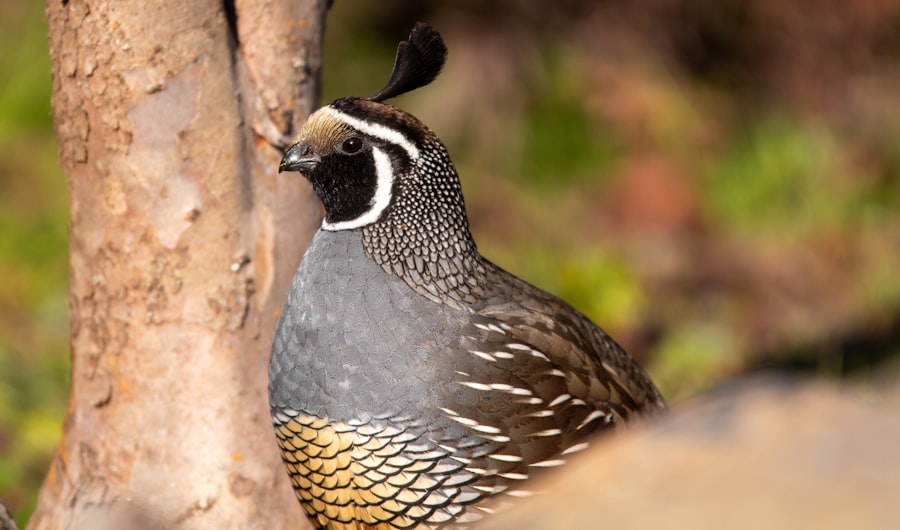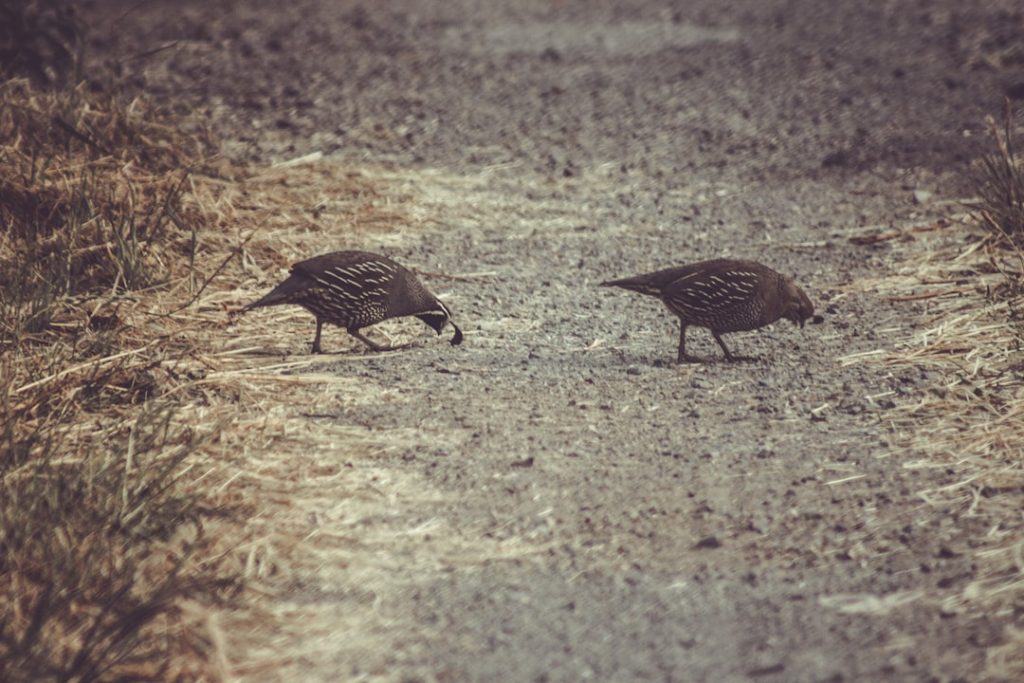Breeding cages are an essential component of successful quail breeding operations. These cages provide a controlled environment for quails to breed, lay eggs, and rear their young. By using breeding cages, quail breeders can closely monitor the breeding behavior, egg production, and overall health of their birds. Additionally, breeding cages help to protect the eggs and chicks from predators and other potential dangers, ensuring a higher survival rate for the offspring. Without proper breeding cages, quail breeding can be chaotic and unmanageable, leading to lower productivity and increased risks to the birds. Therefore, understanding the importance of breeding cages and investing in high-quality, well-designed cages is crucial for successful quail breeding operations.
Breeding cages also play a significant role in maintaining genetic diversity and preventing inbreeding within quail populations. By separating breeding pairs into individual cages, breeders can carefully select which birds to pair together, ensuring that genetic diversity is preserved and that offspring are healthy and robust. This practice is essential for the long-term sustainability of quail breeding programs and helps to maintain the overall health and vitality of the quail population. Furthermore, breeding cages allow breeders to control the number of eggs that are laid and the number of chicks that are hatched, preventing overcrowding and ensuring that each bird receives adequate care and attention. Overall, breeding cages are a fundamental tool for quail breeders, providing a safe and controlled environment for breeding, protecting the offspring, and maintaining genetic diversity within the population.
Table of Contents
- 1 Choosing the Right Size and Design for Coturnix Quail
- 2 Providing the Necessary Environmental Conditions for Breeding
- 3 Maintaining Cleanliness and Hygiene in the Breeding Cages
- 4 Monitoring Breeding Behavior and Egg Production
- 5 Addressing Health and Safety Concerns for Coturnix Quail
- 6 Tips for Successful Breeding and Rearing of Coturnix Quail
- 7 FAQs
- 7.1 What are coturnix quail breeding cages?
- 7.2 What are the benefits of using coturnix quail breeding cages?
- 7.3 What should be considered when choosing coturnix quail breeding cages?
- 7.4 How many quail can be housed in a breeding cage?
- 7.5 What are some common features of coturnix quail breeding cages?
Key Takeaways
- Breeding cages are essential for providing a safe and controlled environment for coturnix quail to breed and lay eggs.
- The right size and design of breeding cages are crucial for ensuring the comfort and well-being of coturnix quail.
- Environmental conditions such as temperature, lighting, and ventilation should be carefully maintained to support successful breeding.
- Regular cleaning and hygiene practices are necessary to prevent the spread of diseases and ensure the health of coturnix quail in breeding cages.
- Monitoring breeding behavior and egg production is important for identifying any issues and ensuring the success of the breeding process.
Choosing the Right Size and Design for Coturnix Quail
When it comes to choosing the right size and design for coturnix quail breeding cages, several factors must be taken into consideration. Firstly, the size of the cage should provide enough space for the quails to move around comfortably, as cramped conditions can lead to stress and reduced breeding productivity. A good rule of thumb is to allow at least 1 square foot of space per bird, although larger cages are preferable if space allows. Additionally, the design of the cage should include features such as perches, nesting boxes, and feeders to accommodate the natural behaviors of the quails and provide a comfortable environment for breeding.
The material used for the construction of the cages is also important. It should be durable, easy to clean, and resistant to corrosion. Wire mesh cages are a popular choice for coturnix quail breeding, as they allow for good ventilation and are easy to sanitize. The spacing of the wire mesh should be small enough to prevent quails from escaping or getting their heads stuck, but large enough to allow droppings to fall through easily. Additionally, the cage should have a solid floor or a wire mesh bottom with a tray underneath to catch droppings and spilled feed, making cleaning and maintenance more manageable. Overall, choosing the right size and design for coturnix quail breeding cages is crucial for providing a comfortable and safe environment for the birds to breed and rear their young.
Providing the Necessary Environmental Conditions for Breeding
Creating the right environmental conditions is essential for successful coturnix quail breeding. The temperature inside the breeding area should be maintained between 60-75 degrees Fahrenheit to ensure optimal breeding conditions. It’s important to provide a consistent light cycle of 14-16 hours of light per day to stimulate breeding behavior and egg production. This can be achieved using artificial lighting or by placing the breeding cages in a location with natural daylight exposure.
Humidity levels should also be monitored, as excessively dry or humid conditions can negatively impact egg production and hatchability. Providing a shallow water source within the cages can help maintain appropriate humidity levels while also meeting the quails’ hydration needs. Additionally, proper ventilation is crucial for maintaining air quality within the breeding area and preventing the buildup of ammonia from droppings.
Nesting materials such as straw or shredded paper should be provided within the cages to encourage nesting behavior and provide a comfortable environment for egg-laying. It’s important to regularly inspect and replace nesting materials to ensure cleanliness and hygiene within the breeding cages. Overall, providing the necessary environmental conditions for breeding is essential for promoting healthy breeding behavior and maximizing egg production in coturnix quail.
Maintaining Cleanliness and Hygiene in the Breeding Cages
Maintaining cleanliness and hygiene within the breeding cages is crucial for preventing disease outbreaks and ensuring the overall health of the quails. Droppings should be removed from the cages daily to prevent the buildup of ammonia and reduce the risk of respiratory issues in the birds. The cage floor and nesting materials should be regularly cleaned and replaced to prevent the accumulation of bacteria and parasites.
Waterers and feeders should be cleaned and sanitized regularly to prevent contamination and ensure that the quails have access to clean water and feed at all times. Using feeders with covers can help prevent feed from becoming soiled with droppings or bedding material. Additionally, regular disinfection of the cages using a mild bleach solution can help control bacterial and fungal growth within the breeding area.
Proper waste management is also essential for maintaining cleanliness within the breeding facility. Droppings and soiled bedding should be disposed of in a designated area away from the breeding cages to prevent contamination and odors within the facility. Overall, maintaining cleanliness and hygiene in the breeding cages is essential for promoting a healthy environment for coturnix quail breeding.
Monitoring Breeding Behavior and Egg Production
Monitoring breeding behavior and egg production is essential for assessing the reproductive health of coturnix quails and identifying any issues that may arise during the breeding process. Observing the behavior of the birds can provide valuable insights into their reproductive status, such as courtship displays, mating behavior, and nesting activities. Changes in behavior, such as aggression between pairs or decreased activity, may indicate stress or health issues that need to be addressed.
Regularly collecting and recording data on egg production is also important for monitoring the reproductive performance of the quails. This includes tracking the number of eggs laid per day, as well as monitoring egg quality and hatchability rates. Any abnormalities in egg production, such as soft-shelled eggs or a sudden decrease in laying, should be investigated promptly to identify potential causes such as nutritional deficiencies or health issues.
By closely monitoring breeding behavior and egg production, breeders can make informed decisions regarding pairing compatibility, nutritional requirements, and overall management practices to optimize breeding success. Additionally, keeping detailed records of breeding performance can help identify trends over time and inform future breeding strategies. Overall, monitoring breeding behavior and egg production is essential for maintaining healthy reproductive cycles in coturnix quails.
Addressing Health and Safety Concerns for Coturnix Quail

Addressing health and safety concerns is paramount for ensuring the well-being of coturnix quails throughout the breeding process. Regular health checks should be conducted to monitor for signs of illness or injury, such as lethargy, abnormal droppings, or respiratory issues. Sick or injured birds should be promptly isolated from the rest of the flock to prevent the spread of disease and receive appropriate veterinary care.
Preventative measures such as vaccination programs and parasite control should be implemented to minimize the risk of disease outbreaks within the breeding facility. Providing a balanced diet with access to clean water and appropriate nutrition is essential for supporting immune function and overall health in coturnix quails.
Ensuring safety within the breeding facility is also important for preventing injuries and stress in the birds. This includes securing cages to prevent escapes, removing any potential hazards such as sharp objects or toxic plants from the environment, and providing adequate space and enrichment to minimize aggression between birds.
By addressing health and safety concerns proactively, breeders can create a safe and healthy environment for coturnix quails to thrive during the breeding process.
Tips for Successful Breeding and Rearing of Coturnix Quail
Successful breeding and rearing of coturnix quails require careful planning, attention to detail, and proactive management practices. Here are some tips for achieving success in coturnix quail breeding:
1. Selecting Healthy Breeding Stock: Choose healthy, robust birds with good genetic traits for breeding purposes. Avoid using birds with known health issues or poor reproductive performance.
2. Providing Adequate Nutrition: Offer a balanced diet that meets the nutritional needs of breeding quails, including high-quality protein sources such as game bird feed or crumbles.
3. Monitoring Breeding Pairs: Observe pairs regularly to ensure compatibility and monitor mating behavior, egg production, and nesting activities.
4. Managing Brooding Conditions: Provide a warm, draft-free brooding area for hatched chicks with access to heat lamps or brooders as needed.
5. Implementing Biosecurity Measures: Minimize disease risks by practicing good biosecurity protocols such as quarantine procedures for new birds and limiting visitor access to the breeding facility.
6. Seeking Veterinary Support: Establish a relationship with a poultry veterinarian who can provide guidance on health management practices and assist with any medical concerns that may arise.
7. Continuous Learning: Stay informed about best practices in quail husbandry through resources such as books, online forums, and industry publications to continually improve breeding techniques.
By following these tips and maintaining a proactive approach to management practices, breeders can increase their chances of success in breeding and rearing coturnix quails while promoting overall health and productivity within their flocks.
If you’re looking for the perfect housing solution for your coturnix quail, you’ll want to check out our article on choosing the best coop for chickens. Just like with quail, providing the right environment is crucial for the health and well-being of your chickens. Whether you’re considering a Hannah Montana Chicken Coop or need advice on chicken coop door size, this article will help you make an informed decision.
FAQs
What are coturnix quail breeding cages?
Coturnix quail breeding cages are specially designed enclosures used for housing and breeding coturnix quail. These cages are typically equipped with features that cater to the specific needs of quail, such as proper ventilation, space for nesting, and easy access for feeding and egg collection.
What are the benefits of using coturnix quail breeding cages?
Using coturnix quail breeding cages provides a controlled environment for breeding and raising quail. It helps to prevent overcrowding, facilitates efficient egg collection, and minimizes the risk of injury or disease transmission among the quail. Additionally, these cages can be designed to maximize space and allow for easy cleaning and maintenance.
What should be considered when choosing coturnix quail breeding cages?
When choosing coturnix quail breeding cages, factors such as cage size, material, ventilation, ease of cleaning, and durability should be taken into consideration. It is important to select cages that provide enough space for the quail to move around comfortably and engage in natural behaviors, while also being easy to maintain and sanitize.
How many quail can be housed in a breeding cage?
The number of quail that can be housed in a breeding cage depends on the size of the cage and the specific needs of the quail breed. As a general guideline, it is recommended to provide at least 1 square foot of space per quail to ensure adequate room for movement and nesting.
What are some common features of coturnix quail breeding cages?
Common features of coturnix quail breeding cages may include removable trays for easy cleaning, wire mesh flooring to prevent injury and allow for droppings to fall through, nesting boxes for egg laying, and a secure door or access point for feeding and egg collection. Additionally, some cages may have adjustable dividers to separate quail for breeding purposes.
Meet Walter, the feathered-friend fanatic of Florida! Nestled in the sunshine state, Walter struts through life with his feathered companions, clucking his way to happiness. With a coop that’s fancier than a five-star hotel, he’s the Don Juan of the chicken world. When he’s not teaching his hens to do the cha-cha, you’ll find him in a heated debate with his prized rooster, Sir Clucks-a-Lot. Walter’s poultry passion is no yolk; he’s the sunny-side-up guy you never knew you needed in your flock of friends!







